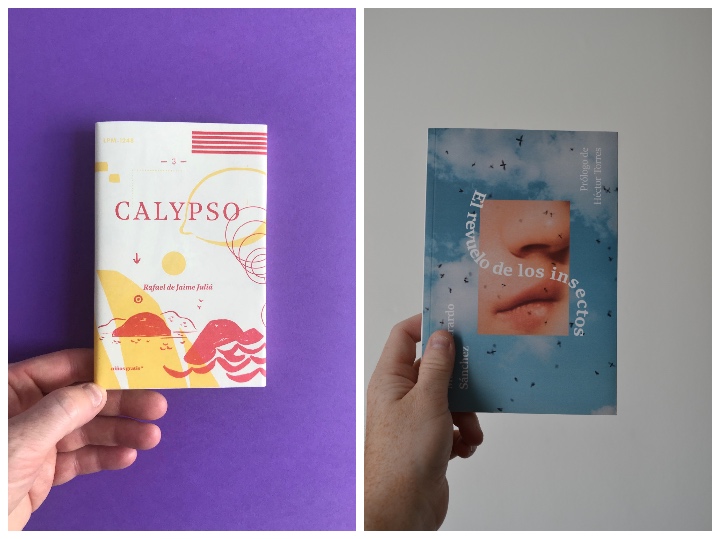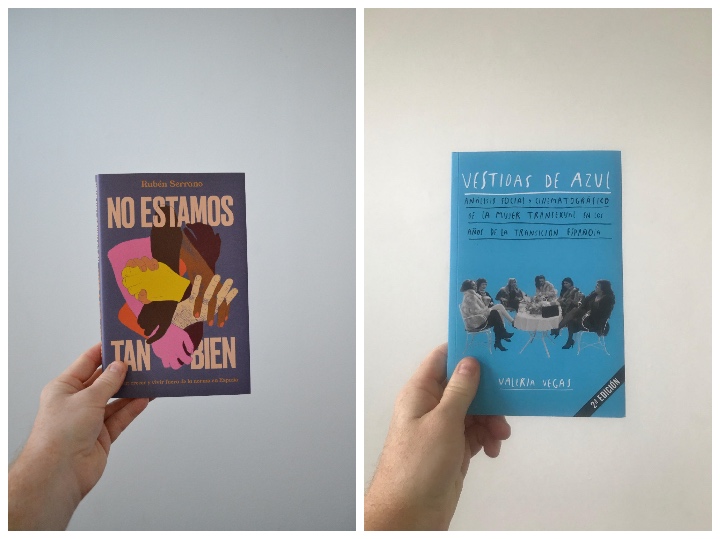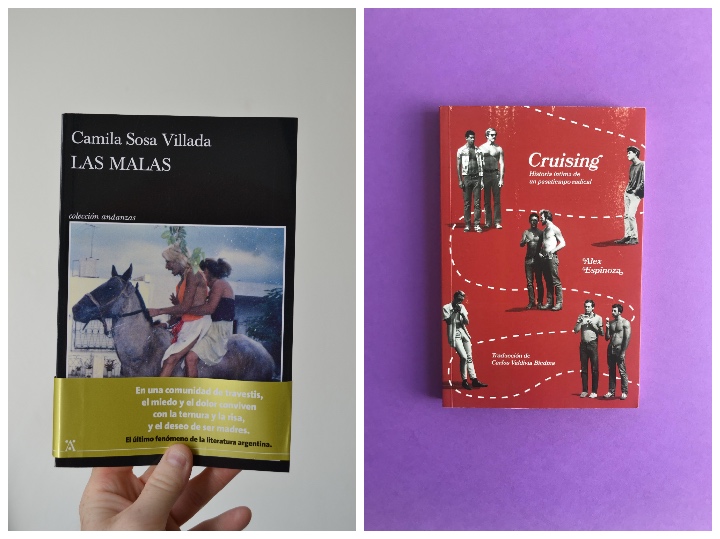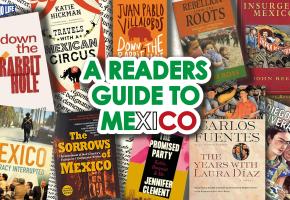1. 'Calypso' by Rafael de Jaime Juliá (Niños Gratis)
There he was, sitting next to me on the boardwalk, a bullfighter, the very stamp of Latin virility, confessing his carnal interest in men. I didn't know what to say to him. You know as well as I that I am not a political man, I am more interested in the problems and passions of individuals than those of collectives, but I felt something, a flash of responsibility that pushed me to comfort this man who was twice my size and suddenly he had begun to shed her tears.
2. 'El revuelo de los insectos' by Manuel Gerardo Sánchez (Egales Editoria)
Two uniformed men flee through a tangled jungle. They are fugitives. They are lovers. Lovers fleeing to freedom as they enter the prison of the other. A first image as paradoxical as the fact that man can make time advance by entering the past. Men who are seen as "insects", according to the glossary of Papá H's revolution, as Pablo Hacha is known, leader of a totalitarian tyranny of an imaginary country, but so real that it could be located in any of the corners of the world where the thirst for power stopped time and, with it, all vestige of progress, all individual freedom, all sense of humanity.

3. “Amigas” Relatos de amor entre mujeres del siglo XVIII al XIX translated by Eva Gallud and Gloria Fortún (Dos Bigotes)
In this collection of stories from women who love women, written by, among others, Constance Fenimore Woolson, Elizabeth Stuart Phelps, Sarah Orne Jewett, Gertrude Stein, Willa Cather, Kate Chopin, Jane Barker, Sui Sin Far and Alice Dunbar-Nelson, diverse types of loves are shelled, from adolescent crushes to well-known Bostonian marriages, sexual, passionate, lost or idealized loves.
Discovering these stories among the works of established authors can once again serve as a guide and reference. Because, as the writer and translator Eva Gallud affirms, “knowing that we are written, read and understood, despite the distance of centuries and the differences between the codes, is crucial for the development of our collective and personal conscience, our public demand and our private reaffirmation”.
4. 'La Resistencia de la loca barroca de Pedro Lemebel. Anomia y militancia corpórea en América Latina' by Tamara Figueroa Díaz (Egales)
This book studies the processes of (re) construction of the memory of Loco Afán: sidario chronicles of one of the most important contemporary Chilean writers of recent times: Pedro Lemebel. From his coliza gaze, he transforms his chronicles into itinerant trips in a complex time in Chile that lives under the dictatorship of Augusto Pinochet (1973-1989). These are journeys full of pain, but also of a lot of sarcasm in the middle of which the scars are transformed into laughter to cope with the repression of homosexuals, transvestites and the appearance of the first cases of HIV in the country during the military regime.

5. No estamos tan bien by Rubén Serrano (Temas de Hoy)
Andrés was beaten up outside a nightclub. Salima had to flee her home when she told her parents that she thought of this girl as more than just her friend. The abuse came to Sonia from her own coworkers. Simon left his country because kissing his partner there was unthinkable. They do not share a neighborhood, city, origins or jobs. Only the pain of knowing that there is violence reaching every corner.
From each of these places comes this great research on growing up and living being queer in today's Spain. From the school to the office, from the hospital to the courts and from the street to the intimacy of the home, the protagonists of this book see how these spaces continue to be conditioned by a world that judges their positions on gender, love and sexuality.
6. 'Vestidas de azul. Análisis social y cinematográfico de la mujer transexual en los años de la Transición española' by Valeria Vegas (Dos Bigotes)
Dressed in Blue by Antonio Giménez-Rico was the first Spanish documentary starring six transsexual women to be released in commercial theaters. Today, 35 years later and with the perspective that the passage of time, the journalist Valeria Vegas analyzes how the media and the cinema approached transsexuality in a truly hostile time for a group as exposed as a minority.
Through the circumstances that surrounded Eva, Loren, Tamara, Josette, Nacha and Renée, the author investigates aspects such as prostitution, entertainment, social exclusion or oppressive laws. Their lives are also those of many other women for whom democracy was not always synonymous with freedom.

7. 'Cruising. Historia íntima de un pasatiempo radical' by Alex Espinoza (Dos Bigotes)
In Cruising. Intimate story of a radical pastime, Alex Espinoza - son of Mexicans who immigrated to the United States - guides us on an uncensored journey through the timeless art of sex between men in public places. Combining research and oral history with his own personal experience, Espinoza examines the political and cultural forces behind this radical pastime.
From ancient Greece to the famous "molly houses" of 18th century England; from the effervescent 70s to the algorithms of Grindr and the cases of Oscar Wilde and George Michael, cruising continues to be a claim to public space and the way to create a place where men of all races and classes interact even in the shadows repressive governments.
8. 'Las Malas' by Camila Sosa (Tusquets)
When she arrived in Córdoba capital to study at the university, Camila Sosa Villada went one night, scared to death, spying on the transvestites in Parque Sarmiento and found her first place of belonging in the world. Las malas is a rite of passage, a fairy tale and horror, a group portrait, an explosive manifesto, a guided visit to the imagination of its author and a chronicle different from all of them. The two trans facets that most repel and terrify the well-thinking society converge in their DNA: transvestite fury and the party of being a transvestite. Marguerite Duras, Wislawa Szymborska and Carson McCullers coexist in her literary voice. The latest phenomenon in Argentine literature, translated into German, French, Norwegian and Croatian.

9. 'Las Biuty Queens' by Iván Monalisa (Editorial Alfaguara)
A unique voice in modern Latin American literature that shakes the New York trans scene with biting storytelling talent.
With a shameless, honest perspective, Iván Monalisa Ojeda dives into the trans universe of New York. The stories in this book tell the story of his life and that of his friends, Latina transsexuals who walk the streets, smoke crystal meth, participate in beauty contests, look for clients on stilettos, and are victims of Trump’s new immigration policies. A world where laughter, survival, death, and love intermingle in a city that fascinates and corners the protagonists.
Iván Monalisa Ojeda’s storytelling talent, which plays with street language full of rhythm, freedom, and sass, positions him as a surprising, unique voice in current Latin American literature.
10. 'El cordero carnívoro' by Agustín Gómez Arcos (Cabaret Voltaire)
The carnivorous lamb narrates, in an intense and provocative way, the life of a boy from his birth until his 25th birthday. Starting from the strange relationship between the protagonist and the beings that surround him, Gómez Arcos reveals, in a stark way, the traumas caused by the civil war in a family of the Andalusian bourgeoisie. Deep reflections on human relationships, death, homosexuality, freedom, dictatorship, religion, make up this novel of love and hate, masterfully written but politically incorrect.

Bonus one
'Lorca en Buenos Aires' by Reina Roffé (Fórcola
In October 1933, on board the Conte Grande ship, Federico García Lorca traveled to Argentina, as part of his cultural journey through America, becoming a sort of Spanish ambassador to the lands of the New Continent. He had previously visited New York and Havana, where he held dialogues with the most representative intellectuals and creators of the 1930s. But it was in Buenos Aires where he experienced one of the best professional and emotional moments of his life.
During the almost six months that he stayed in the Argentine capital, he frequented theaters, literary salons and all the corners of the city with Pablo Neruda and Salvador Novo. He became friends with Oliverio Girondo and Norah Lange, Ricardo Molinari and Alfonsina Storni, Enrique Santos Discépolo and Raúl González Tuñón. He shared a table with Carlos Gardel and a still adolescent Eva Perón. Not a single artist from the national scene, such as Lola Membrives, or characters of the time, including Juan Carlos Onetti, Roberto Arlt, Victoria Ocampo and Jorge Luis Borges, remain absent from these pages, in which history, biographies, testimonies, chronicles , and fragments of reality and dreams make up a dense plot where truth and fiction, life and literature commune.
All the above books available at Romancero Books https://www.romancerobooks-store.co.uk/
For recommendations contact Jorge:
hola@romancerobooks.co.uk
IG @romancerobooks
Twitter @romancerobooks



















